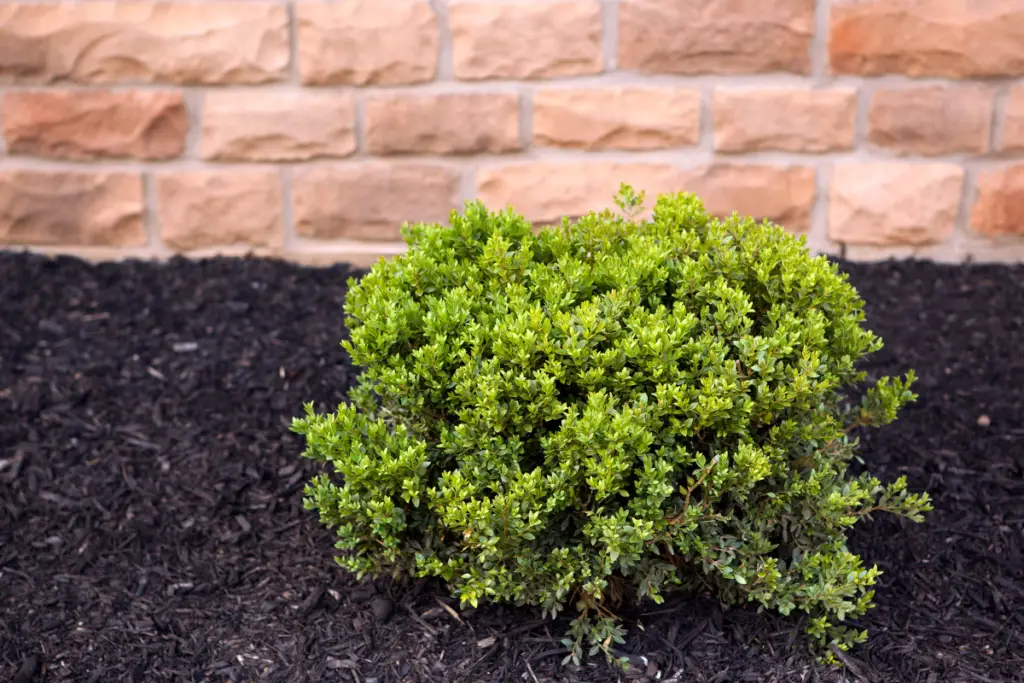The best month to plant shrubs depends on several factors, including the type of shrub, the climate, and the planting method.
However, there are general guidelines that gardeners can follow to ensure their shrubs have the best chance of thriving.
In general, the best time to plant shrubs is during the dormant season, which is usually in the fall or early spring.
Planting during these times allows the shrub to establish its root system before the hot summer months or freezing winter temperatures arrive.
Additionally, planting during the dormant season reduces the stress on the shrub, which can improve its chances of survival.
It’s important to note that the exact timing of planting shrubs will depend on the specific climate and location.
Gardeners should consult with local experts or gardening resources to determine the best time to plant shrubs in their area.
By following these guidelines and consulting with local experts, gardeners can ensure that their shrubs have the best chance of thriving and adding beauty to their landscape.

Table of Contents
Understanding Shrubs
Shrubs are a type of woody plant that are commonly used in landscaping and gardening. They are often used to create hedges, borders, or as standalone features in gardens.
Shrubs come in many varieties, from small and low-growing to large and tall. Some shrubs are evergreen, meaning they keep their leaves year-round, while others are deciduous, meaning they lose their leaves in the fall.
When it comes to planting shrubs, there are a few things to keep in mind. First, it’s important to choose the right location for your shrub.
Consider the amount of sunlight the area gets, as well as the soil type and drainage. Some shrubs prefer full sun, while others do better in partial shade. It’s also important to make sure the soil is well-draining, as too much moisture can lead to root rot.
Another important factor to consider when planting shrubs is the timing. While shrubs can be planted at any time of year, there are certain months that are better than others.
Generally, the best time to plant shrubs is in the fall or early spring, when the soil is moist but not too cold.
This gives the shrub time to establish its roots before the hot summer months or cold winter months arrive.
It’s also important to prepare the soil before planting your shrub. This can involve adding compost or other organic matter to improve soil quality and drainage.
When planting the shrub, make sure the hole is deep enough to accommodate the entire root ball, and that the shrub is planted at the same depth it was in its original container.
After planting, be sure to water the shrub thoroughly and regularly, especially during the first year of growth.
By understanding the needs of shrubs and taking the time to choose the right location and timing for planting, you can help ensure that your shrubs thrive and add beauty to your garden for years to come.
Best Time to Plant Shrubs
The best time to plant shrubs depends on the climatic conditions of the region. Generally, the ideal time to plant shrubs is during the fall season, which is from September to November.
During this time, the soil is warm enough to encourage root growth before the winter season arrives. Six weeks is enough time for the shrubs to establish strong roots before the ground starts to freeze.
Fall is the best season to plant shrubs, as the above-ground structures of most ornamental plants go dormant and cease growth.
This allows the plants to focus their energy on root development, which is essential for healthy growth and survival.
However, it’s important to note that some shrubs have specific planting requirements.
For example, deciduous shrubs, which lose their leaves in fall and winter, are best planted in fall during their dormant period, similar to planting bare root trees.
On the other hand, evergreen shrubs can be planted in either spring or fall.
Planting shrubs in the spring is also an option. Spring weather is usually mild, and nurseries start filling up with color, making it an excellent time to plant flowering shrubs.
However, it’s important to avoid planting shrubs during the hot summer months, as this can lead to stress and damage to the plant.
Factors Affecting Planting Time
When deciding the best month to plant shrubs, several factors should be considered. The climate, shrub type, and soil conditions all play a crucial role in determining the best time to plant shrubs.
Climate
Climate is a significant factor in determining the best time to plant shrubs.
In general, shrubs should be planted during the cooler months of the year when the temperature is mild.
In warmer climates, it is best to plant shrubs during the fall or winter months when the temperature is cooler.
In contrast, in colder climates, it is best to plant shrubs during the spring or early fall when the temperature is milder.
Shrub Type
Different types of shrubs have different planting times. Deciduous shrubs, which lose their leaves in the fall and winter, are best planted in the fall during their dormant period when they are not growing.
Evergreen shrubs, which keep their leaves year-round, can be planted in the spring or fall. It is also essential to consider the mature size of the shrub when planting.
Larger shrubs should be planted in the fall, while smaller shrubs can be planted in the spring.
Soil Conditions
Soil conditions are also an important factor in determining the best time to plant shrubs. The soil should be moist but not waterlogged when planting shrubs.
If the soil is too dry, the shrub may not establish itself, and if it is too wet, it may develop root rot.
Additionally, the pH level of the soil should be considered. Most shrubs prefer a slightly acidic soil with a pH between 6.0 and 6.5.
Planting Shrubs in Different Seasons
When it comes to planting shrubs, the best time to plant them depends on the season.
Each season has its own advantages and disadvantages when it comes to planting shrubs.
Spring Planting
Spring is a great time to plant shrubs because the soil is starting to warm up and the weather is mild.
This allows the shrubs to establish their roots before the hot summer months arrive. However, it’s important to plant early in the spring before the temperatures get too warm.
Late spring planting can stress the shrubs and make it harder for them to establish roots.
Summer Planting
Summer is not the best time to plant shrubs because the hot weather can stress the plants and make it harder for them to establish roots.
However, if you must plant in the summer, make sure to water the shrubs regularly to help them establish roots and stay hydrated.
Autumn Planting
Autumn is the best time to plant shrubs because the soil is still warm from the summer months and the weather is mild.
This allows the shrubs to establish their roots before the winter months arrive.
Additionally, the cooler weather and increased rainfall in the fall make it easier for the shrubs to establish roots.
Winter Planting
Winter is not the best time to plant shrubs because the ground is frozen and the shrubs may not be able to establish roots.
However, if you live in a warmer climate, you may be able to plant shrubs in the winter. Make sure to water the shrubs regularly and protect them from frost and cold temperatures.
Proper Planting Techniques
When planting shrubs, it is important to follow proper techniques to ensure successful growth and development.
Here are some tips to keep in mind:
1. Choose the Right Location
Select a location that provides adequate sunlight and proper drainage. Most shrubs prefer full sun to partial shade, but some varieties may require more shade.
Additionally, make sure the soil is well-drained to prevent waterlogging, which can lead to root rot.
2. Prepare the Soil
Before planting, it is important to prepare the soil. Remove any weeds, rocks, or debris from the planting area, and amend the soil with organic matter such as compost or peat moss.
This will help improve soil structure, fertility, and drainage.
3. Dig the Hole
Dig a hole that is slightly larger than the root ball of the shrub. The depth of the hole should be equal to the height of the root ball.
This will ensure that the shrub is planted at the proper depth.
4. Plant the Shrub
Carefully remove the shrub from its container and gently loosen any tangled roots. Place the shrub in the hole and backfill with soil, making sure to firm the soil around the root ball.
Water the shrub thoroughly to help settle the soil.
5. Mulch and Water
Apply a layer of mulch around the base of the shrub to help retain moisture and suppress weeds.
Water the shrub regularly, especially during the first year of growth, to help establish a strong root system.
By following these proper planting techniques, you can help ensure that your shrubs grow and thrive in their new location.
Post-Planting Care
After planting shrubs, it is important to take good care of them to ensure they grow healthy and strong.
Here are some tips for post-planting care:
Watering
Watering is crucial in the first few weeks after planting. Newly planted shrubs have small root systems and need frequent watering to establish themselves.
Water the shrubs deeply once a week, or more often if the weather is hot and dry.
Make sure the water reaches the root zone, which is about 6-8 inches deep. Avoid overwatering, as this can drown the roots and lead to root rot.
Mulching
Mulching helps to retain moisture in the soil and suppress weeds. Apply a layer of organic mulch, such as shredded leaves, wood chips, or straw, around the base of the shrubs.
Make sure the mulch is not touching the stems, as this can cause rotting. A 2-3 inch layer of mulch is sufficient.
Fertilizing
Fertilizing is not necessary immediately after planting, as the shrubs need time to settle in. Wait until the following spring to apply a slow-release fertilizer.
Follow the manufacturer’s instructions for application rates and timing. Over-fertilizing can burn the roots and damage the shrubs.
Pruning
Pruning is not necessary immediately after planting, but it is important to remove any broken or damaged branches.
Wait until the following year to do any major pruning. Prune in late winter or early spring before new growth appears.
Use clean, sharp pruning shears and make clean cuts just above a bud or lateral branch.
Pests and Diseases
Keep an eye out for pests and diseases, such as aphids, spider mites, and powdery mildew. Early detection and treatment can prevent these problems from spreading.
Use organic methods, such as insecticidal soap or neem oil, to control pests. Remove any infected leaves or branches and dispose of them properly.
Conclusion
The best month to plant shrubs depends on various factors such as the type of shrub, weather conditions, and location.
However, in general, the ideal time to plant shrubs is during the cooler months of the year, such as fall or early spring.
This allows the shrubs to establish their roots before the hot summer months arrive.
It is important to research the specific needs of the shrub and consult with a local gardening expert for the best planting time in your area.
- How to Dry Basil Leaves: A Professional Guide
- Is an Avocado a Fruit or Vegetable? Simple Answer and Explanation
- Does Pineapple Have Seeds? Exploring the Anatomy of Pineapples
- Blooming Through Winter: Can I Grow Vegetables Indoors in the Winter?
- What Can You Grow in a Greenhouse All Year Round: A Guide to Year-Round Greenhouse Gardening
- Are Blueberries Blue? Debunking the Myth of Their Color
















